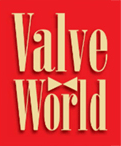Saint-Gobain Seals released a special technical white paper for engineers and manufacturers in the space industry titled ‘Sealing Solutions in Critical Cryogenic Applications: Going Beyond Leakage Rate’ describing key as well as overlooked factors related to seal selection for core systems in extreme environments such as cryogenic fuel tanks and feedlines. The white paper was developed to help space organizations gain critical engineering insights and to further understand other stressing factors that affect sealing performance aside from leakage rate.
By reviewing other factors, a well-balanced sealing solution can be secured and the performance life of the seal can be increased, which can make THE difference in hardware weight and eventual cost-savings.
Since the leakage rate remains one of the more challenging and dangerous elements in launch vehicle missions, the white paper starts with this critical factor. Various cryogenic tanks house rocket fuel components, which can include liquid forms of oxygen, hydrogen, nitrogen, and methane as well as gaseous helium and others. Since fuel tanks are very large, they require seals that are equally large in size – typically between one and two meters or even larger. Sealing then becomes extremely important to prevent rocket fuel components from being ignited, withstanding the forces caused not only by take-off but now during landing.
The white paper continues with other critical factors that need to be considered along with leakage rate, sharing testing results for Saint-Gobain Seals’ OmniSeal® RACO® spring-energized seals and metal seals related to hardware weight and spring back rates caused by the typical forces a launch vehicle system experiences. The data demonstrates what makes a seal more reliable, especially after repeated use, which is the direction of future space exploration.


